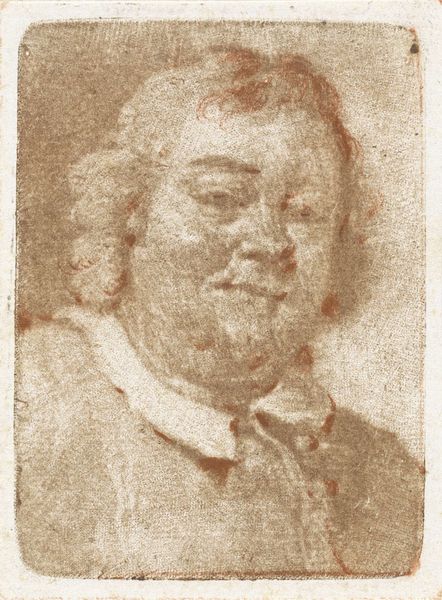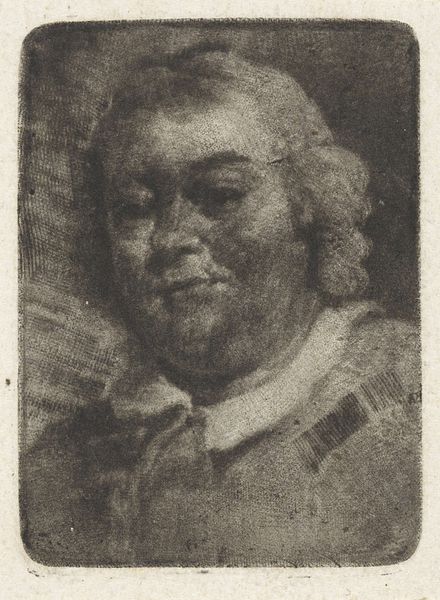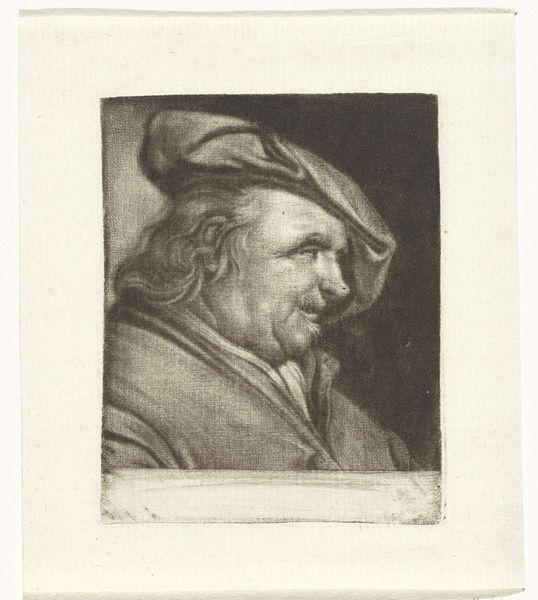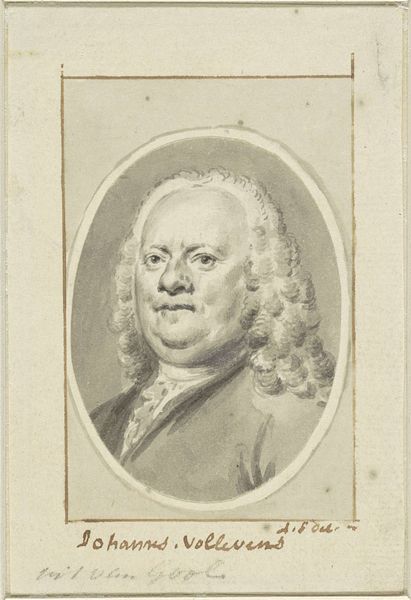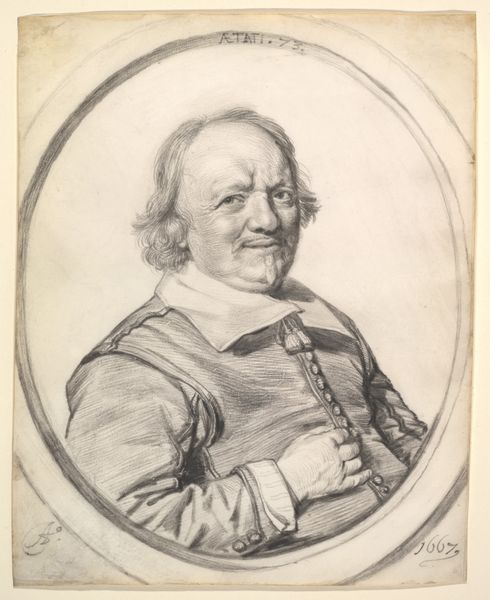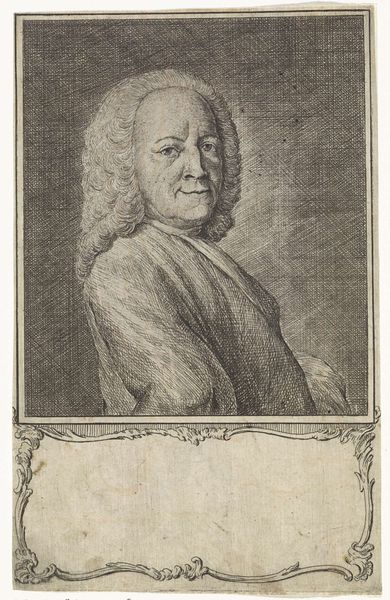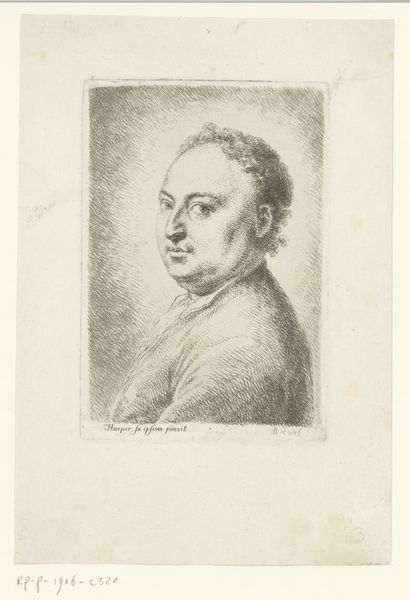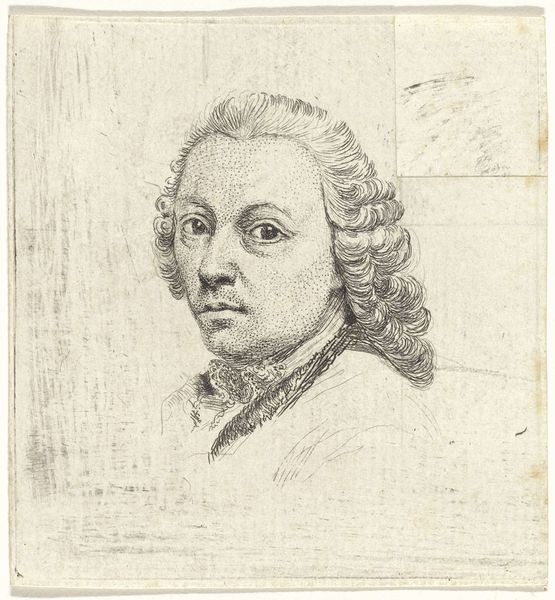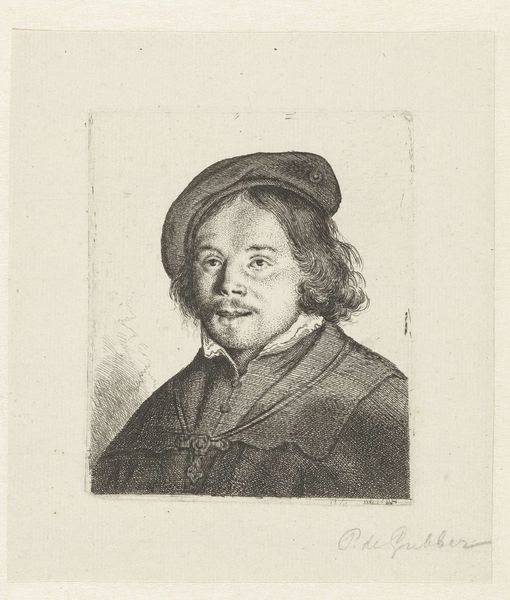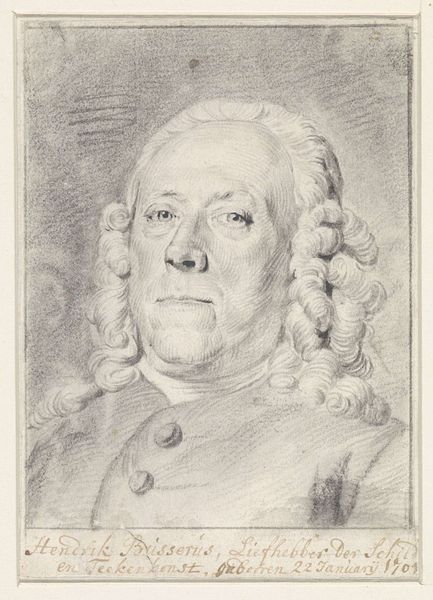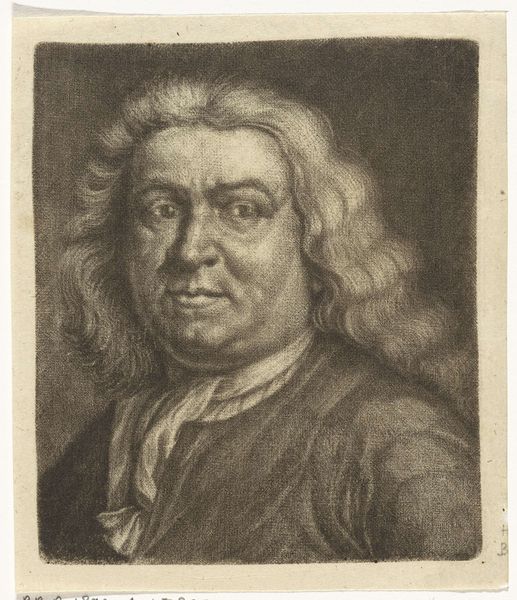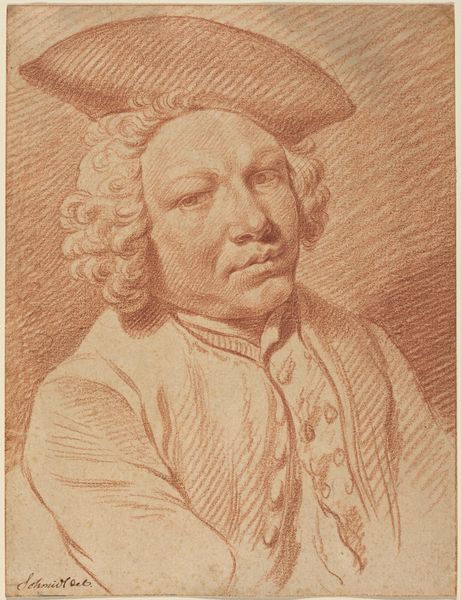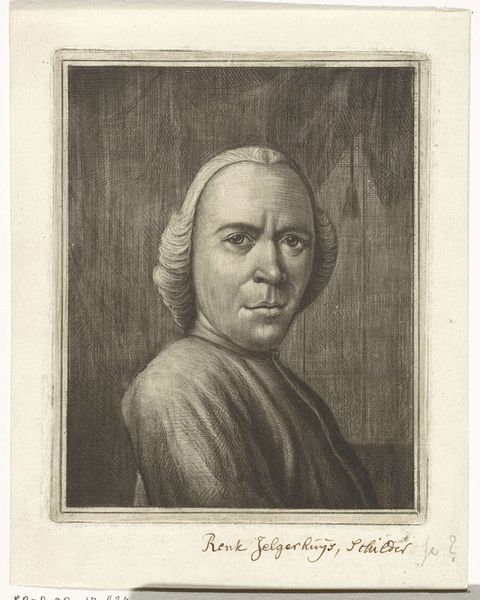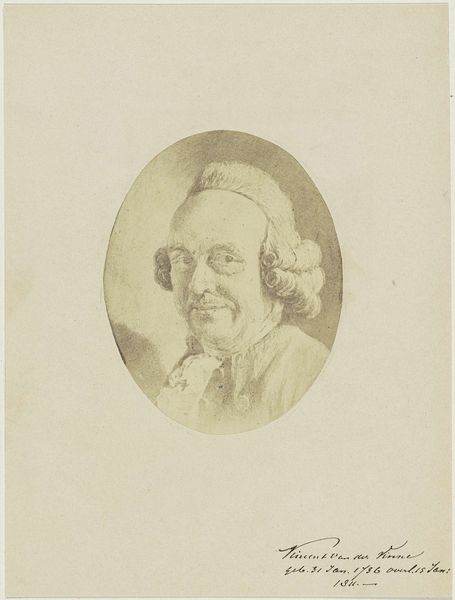
drawing, charcoal
#
portrait
#
drawing
#
baroque
#
charcoal drawing
#
pencil drawing
#
charcoal
#
charcoal
Dimensions: height 73 mm, width 53 mm
Copyright: Rijks Museum: Open Domain
Editor: Here we have Aert Schouman’s “Buste van een man,” placing it sometime between 1720 and 1792. It's a charcoal drawing with quite a presence, capturing a figure with soft features and a certain understated dignity. I'm struck by the texture achieved with charcoal. What do you see when you look at it? Curator: I’m drawn to the raw materiality of this piece. Schouman’s choice of charcoal, a relatively inexpensive and readily available medium, is key. Think about the accessibility it provided - charcoal production itself involved labor, often tied to specific regions and economies. Was this work commissioned, or a study? Its function directly impacts its material value. Editor: That's interesting, I hadn't considered charcoal in that way before. Is the lack of colour significant? Curator: Absolutely. The monochrome palette forces us to focus on the gradations of tone achieved through the manipulation of the charcoal. It becomes a question of labor - how much time was invested in building up these subtle shifts in value? How does this relate to the economic value placed upon portraiture at the time? What were the labour conditions and accessibility of art training and material for art creation in general? These all factor into our material understanding. Editor: So, by examining the charcoal itself, its accessibility and application, we gain a richer understanding of the artwork and its place in society? Curator: Precisely! It allows us to question traditional hierarchies that separate "high art" from "craft", as the means of production become just as important as the final image. Editor: That’s fascinating, looking at it this way opens up a whole new level of interpretation for me. Curator: Indeed. Considering the social and economic conditions of its creation reveals so much more than just the surface representation. It's a process of revealing layers of historical and material reality embedded within the artwork.
Comments
No comments
Be the first to comment and join the conversation on the ultimate creative platform.
